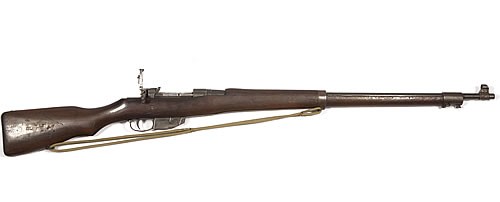
Ross Model 1910 Mk III .303 calibre rifle used as a sniper rifle on the Western Front by Private Alfred Hugh Dillon MM, Wellington Infantry Regiment.
Private Dillon arrived in France as a member of the 20th Reinforcements (B Company, Wellington Infantry Battalion) on 7 December 1916. He was awarded the Military Medal (MM) for gallantry at Bon Avis Ridge over the period 29 September – 3 October 1918 while acting as Battalion Observer.
This image Appears In 2 Articles:
Keywords
Credit
National Army Museum Te Mata Toa
Accession Number: 1998.551
Permission
of the National Army Museum Te Mata Toa must be obtained before any reuse of this image.
How to cite this page
'First World War sniper rifle', URL: https://nzhistory.net.nz/media/photo/dillon-sniper-rifle, (Ministry for Culture and Heritage), updated 19-Aug-2014

Community contributions